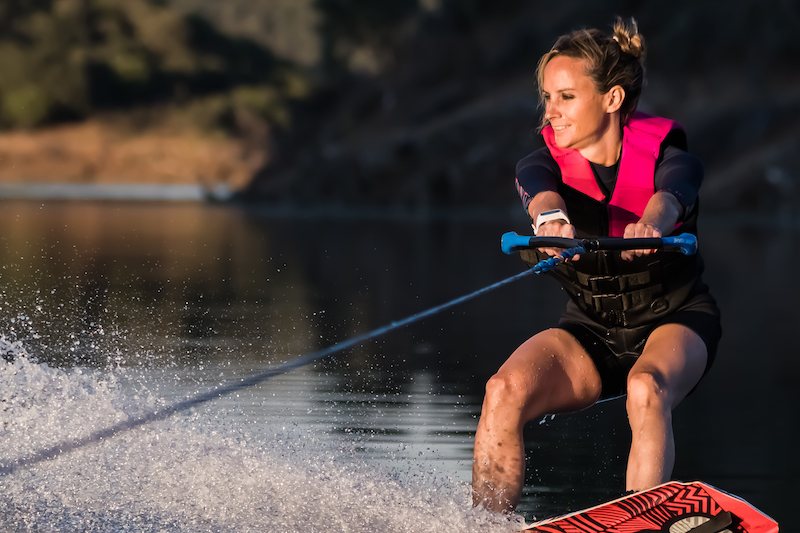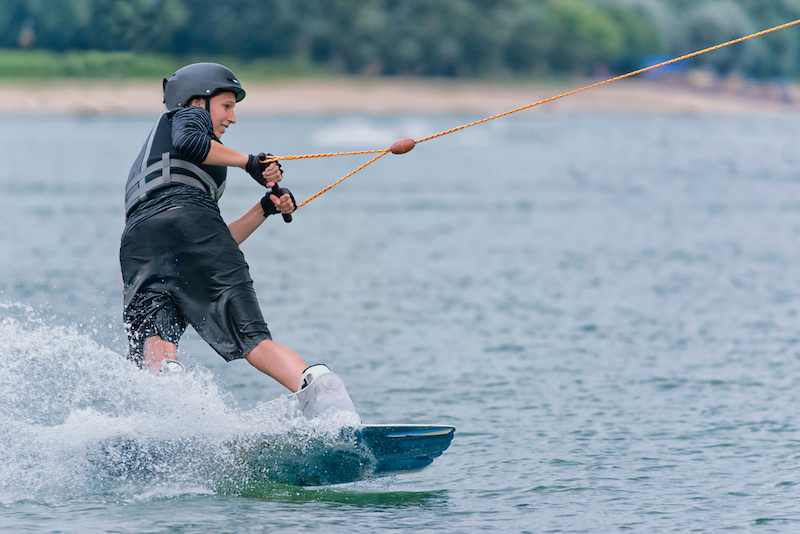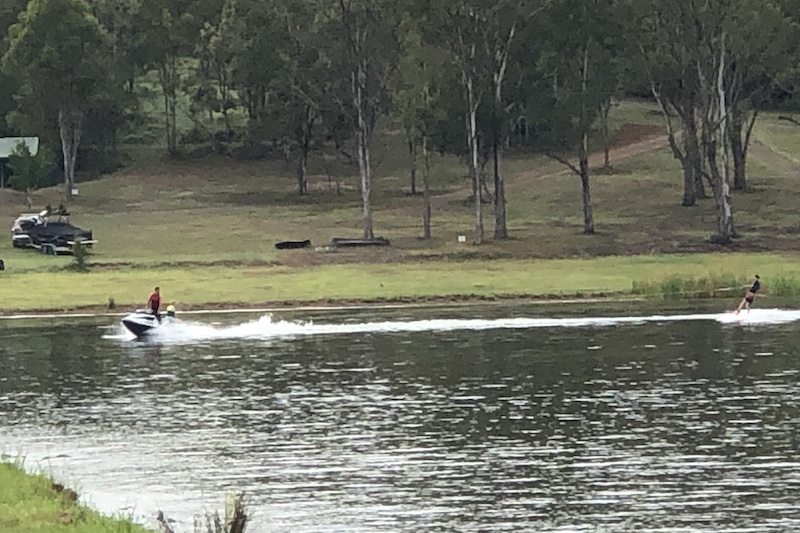Get The Right Wakeboard Rope Length For Your Rider
The rope is a very important aspect of wakeboarding, and there are certain wakeboard rope lengths that are either required or are helpful for mastering the sport. A wakeboarder’s skill and ability to do tricks are affected by the length of the rope, and even the slightest adjustment can mean the difference between winning or wiping out.
As a beginner you may find that trying to determine what length of rope you need can be extremely tricky. Ask most wakeboard instructors and they’ll give you a noncommittal, “It depends…” The answer isn’t cut and dry; it really does depend.
But don’t despair just yet. We’re going to give you a breakdown of that “depends”. In this article we’ll help you understand what kind of rope to use for what situation and how you can adjust it for success.
What are the different types of wakeboarding tow ropes?
Wakeboarding tow ropes are an essential part of the sport, and there are several different types.
Wakeboard ropes have come a long way since the sport was first invented in the 1970’s. The first ropes were just water ski ropes that had a significant amount of stretch in them. Stretch is not a wakeboarder’s friend, since it decreases the amount of responsiveness and the consistency of the pull, so fortunately the ropes were developed to what we have today: sturdy polyurethane-coated rope that has very little stretch and gives the rider a great amount of control.
The type of rope is just as important as the wakeboard rope length you choose.

There are three different types of wakeboarding tow ropes: Poly E, Dyneema, and Spectra. They are all coated polyurethane that is incredibly durable and gives little to no stretch. With the new types of ropes, wakeboarders are able to achieve better control of their movement.
Poly E ropes for wakeboarding
Dyneema wakeboarding rope
Dyneema is a no-stretch wakeboarding rope that is stronger than steel and other synthetic ropes. It’s a very strong polyethylene that has extra-high molecular weight, meaning it’s one of the strongest materials in the world. Even though it’s so strong it can float in the water! Dyneema can stand up to salt water and UV rays because of its coating.
Spectra wakeboarding rope
Spectra is another super-power fiber. It’s five times stronger than steel while still being incredibly lightweight. It has a higher resistance to wear than Dyneema rope. It’s often used for rigging on ships. Spectra will also float, and gives you no stretch, which makes it ideal for more advanced wakeboarders.

Wakeboarding rope lengths are usually from 65 feet all the way to 75 feet or more. Short ropes are usually 65 feet, medium are 60-70 feet, and long ropes are 75 and over.
Is there a “right” wakeboard rope length?
No, unfortunately there is no “right” wakeboard rope length. There are, however, a few factors that will help you determine the length of your rope. These are the shape of the wake and your skill level for tricks.
You’ll know you’re in your “sweet spot” when approaching a wake by knowing what to look for. When you’re riding beside a wake check to see where it’s curling over. If it’s 2 or 3 feet behind you, your rope is probably too short. If it’s curling 2 or 3 feet in front of you, your rope is probably too long.
When you’re going longer, let your rope out gradually, about 5 feet at a time so you have time to get used to it.
When to use different wakeboard rope lengths
Wakeboard rope lengths have a lot to do with physics. A rider at the end of a wakeboarding tow rope rotates around a fixed point: the boat. When the rope is longer the circular path is larger than when the rope is short. A longer circular path will be slower and more controlled, giving you more room to prepare for jumps, and it can be less stressful, especially for beginners. You’ll have more time to anticipate the wake as you get closer to it. You’ll also be able to spend more time working on and perfecting board control and technique.
On the other hand, a short rope results in a smaller circular path, bringing you closer to the boat much faster. Your time to prepare for tricks and jumps is shorter than with a long rope. However, using a shorter rope can allow the boat to go slower, which is ideal for beginners. The slower the boat is, the wider apart the wakes will be, which allows beginners to spend more time between wakes.
A longer wakeboard rope length
- Gives you more lateral room behind the boat
- Allows you to focus more on board control without focusing on the wake
- Gives you more space between the wakes
- Puts you in a spot where there is less turbulence
- Gives you more natural momentum
- Allows you to focus more on technique
A shorter wakeboard rope length
- Requires less speed and height to switch back and forth from the wakes
- Enables the boat to go slower, making the closer wake wider. You can go higher with less speed
- Combined with slower speeds can create an ideal wake for learning beginning jumps
What is the best wakeboard rope length for a beginner?
The best wakeboard rope length for beginners is 65 feet. This makes it easier to clear the wake. You’ll most likely use different lengths depending on what you’re learning, however. Just adjust your rope to match whatever you’re working on. Don’t feel like you have to stick with a certain length. Adjust your rope as you learn, feeling out what works and what is right for you. Once you know how to adjust your wakeboard rope length for each trick you’ll be well on your way to mastering wakeboarding!
Related Posts:
No related posts.

